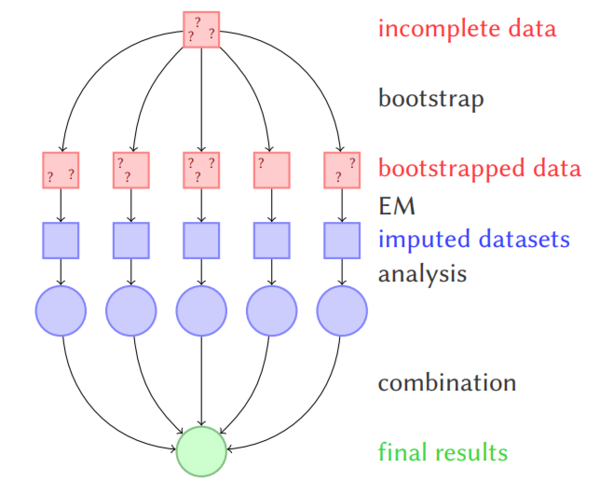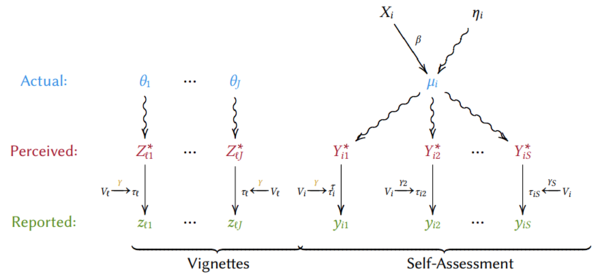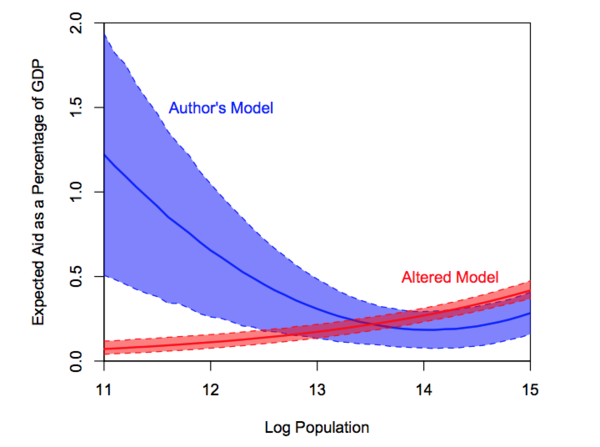Lecture Notes for Quantitative Social Science Methods, I
These are the slides I used for lecture in spring 2019. When I lecture, I go through as much material as possible at each lecture, subject to the constraint that everyone follows what I'm doing. The speed at which I go is therefore dependent on the composition of each year's class and the questions that arise. As such, the slides below are not broken up into distinct weeks (I seem to go through roughly 15-20 pages in a weekly session lasting almost 2 hours, but issues and topics not represented here are covered most weeks).
Separate PDF versions of the slides appear for teaching (i.e,. with pauses, etc.) and as a handout for printing. (A warning about the handouts: they're created automatically and so so occasionally don't accurately represent what the page looks like if you click through the slides for teaching.) I update this material almost continuously while I teach. I'd very much appreciate if you would contact me with any comments, corrections, or suggestions.
Introduction
Theories of Inference
The lecture slides are here and the one-page-at-a-time (color) slides for printing are here.

"Theories of Inference" covers the following topics:
- The Impossibility of Inference without Assumptions
- Three Theories of Inference: Overview
- Likelihood: Example, Derivation, Properties
- Uncertainty in Likelihood Inference
- Simulation from Likelihood Models
- Extending the Linear Model with a Variance Function
Models for Binary Outcome Variables
The lecture slides are here and the one-page-at-a-time handout for (color) printing is here.
"Models for Binary Outcome Variables" covers the following topics:
- Linear Probability, Logit, Probit Models
- Interpreting Functional Forms
- Alternative Interpretations of Binary Models
- General Rules for Presenting and Interpreting Statistical Results
Assorted Models for Single Variable Outcomes
Model Evaluation
Research Designs for Causal Inference
Detecting and Reducing Model Dependence in Causal Inference
The lecture slides are here and the handout for one-page-at-a-time (color) printing is here.

"Detecting and Reducing Model Dependence in Causal Inference" covers the following topics:
- Detecting Model Dependence
- Matching to Reduce Model Dependence
- Three Matching Methods
- Problems with Propensity Score Matching
- The Matching Frontier
Multiple Equation Models
Models for Missing Data
The lecture slides are here and a handout for one-page-at-a-time (color) printing is here.

"Models for Missing Data" covers the following topics:
- Overview
- Missingness Assumptions
- Application Specific Methods
- Multiple Imputation
- Computational Algorithms
- What Can Go Wrong
- Time Series, Cross-Sectional Imputations
Anchoring Vignettes for Interpersonally Incomparable Survey Responses
The lecture notes are here and a handout for one-page-at-a-time (color) printing is here.

"Anchoring Vignettes for Interpersonally Incomparable Survey Responses" covers the following topics:
- Introduction
- A Nonparametric Method
- A Parametric Method
- Illustrations
- Quantities of Interest
- Optimal Vignette Choice


